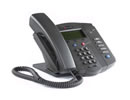'ZDNET Recommends': What exactly does it mean?
ZDNET's recommendations are based on many hours of testing, research, and comparison shopping. We gather data from the best available sources, including vendor and retailer listings as well as other relevant and independent reviews sites. And we pore over customer reviews to find out what matters to real people who already own and use the products and services we’re assessing.
When you click through from our site to a retailer and buy a product or service, we may earn affiliate commissions. This helps support our work, but does not affect what we cover or how, and it does not affect the price you pay. Neither ZDNET nor the author are compensated for these independent reviews. Indeed, we follow strict guidelines that ensure our editorial content is never influenced by advertisers.
ZDNET's editorial team writes on behalf of you, our reader. Our goal is to deliver the most accurate information and the most knowledgeable advice possible in order to help you make smarter buying decisions on tech gear and a wide array of products and services. Our editors thoroughly review and fact-check every article to ensure that our content meets the highest standards. If we have made an error or published misleading information, we will correct or clarify the article. If you see inaccuracies in our content, please report the mistake via this form.
Polycom SoundPoint IP 301


Polycom SoundPoint IP 301
pros and cons
- Large, clear status display easy menu navigation using soft keys unusual styling
- No backlight for the status display small keypad buttons unusual styling
- Editors' review
- Specs
The Polycom SoundPoint IP 301 is quite a large phone, but with generally small, tightly grouped buttons (the round keypad buttons are 10mm in diameter). Overall the design has perhaps a touch of the Memphis Group and Art Deco about it.
The LCD status panel is generously sized at 8.5 x 3cm and has three soft keys arranged below its bottom edge, with the two line/account select keys to its right. One of these keys can be assigned as a speed dial number, rather than a second line select. Below the three soft keys are a blue headset select button and a red mute button, and below those are the twelve keypad buttons. Two small, oval, plus and minus volume buttons are below the keypad. In a vertical row along the right edge of the phone are two rectangular buttons labelled with up and down arrows for menu navigation, a rectangular Menu select button, a Do-not-disturb button, a Redial button and finally a round blue, Hold button. These five buttons can be reprogrammed to provide quick access to other functions. For example, the DND key could be reprogrammed as a call transfer key. Polycom provides five clear replacement keycaps, with pre-cut paper inserts, that can be marked with new legends and fitted to these keys.
The three soft keys are used quite extensively for context-dependent functions. For example, during a call the soft keys have legends displayed above them on the LCD, such as Trnsfr to transfer a call. Similarly, call lists can be accessed by pressing the Menu button and then navigating through Features, Call lists and either Missed, Received or Placed calls, using the up/down navigation buttons and the soft keys.
Although it's far from the worst offender we've seen, for a two-account phone the Polycom IP 301 is surprisingly difficult to set up. The internal Web server has five pages, three of which are protected by user name and password. Factory defaults for these are; user name = Polycom and password = 456. Ten entries, spread between the SIP page and the Lines page, are required for the basic setup of this phone.
For desktop use, the IP 301 is supported at around 30 degrees by a flat plastic baseplate that clips on to two pillars extending below the phone body. For wall mounting this plate can be reversed.
All the connections to this phone are underneath, in a straight row near the front edge. Apart from restricting access to all the connectors, unfortunately this means that the straight, moulded coaxial power connector on the in-line power supply provided, only just fits into the available gap and the power cable has to bend through an extreme angle to exit underneath the phone. A right-angle connector would be a better fit.
Although some people might not like the styling of the Polycom SoundPoint IP 301, it has a large clear status display (unfortunately without a backlight) and provides access to quite a wide range of functions through its soft keys, while keeping the number of buttons on the phone down to a minimum.